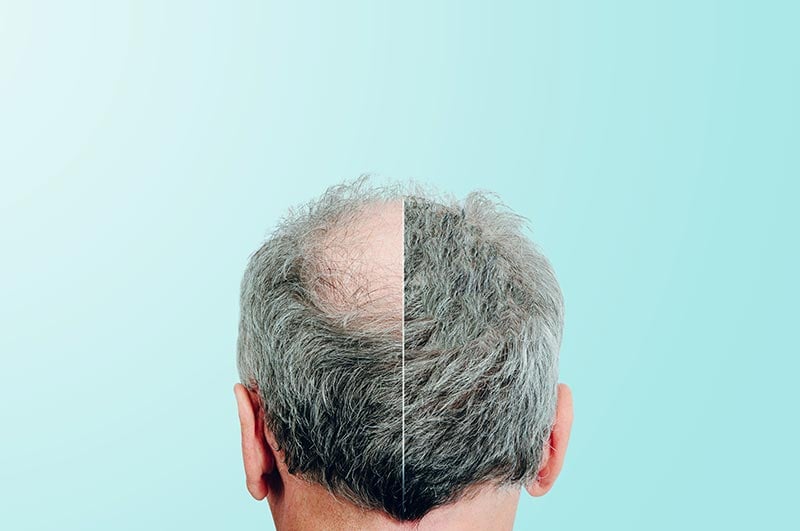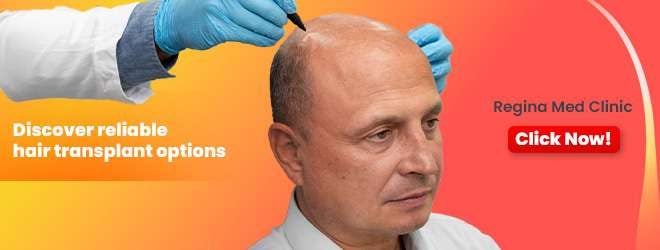What is PRP Hair Treatment?
PRP (Platelet Rich Plasma) hair treatment is a procedure in which plasma derived from the patient’s own blood is separated through a special process and injected into the scalp. The plasma used in PRP treatment is rich in growth factors and nutrients. Due to these properties, it is considered an effective method for stimulating hair follicles to reduce hair loss, improve hair quality, and strengthen hair strands. PRP hair treatment is applied to both men and women to slow down hair loss, nourish hair follicles, and support healthier hair growth.
Hair loss can occur due to various reasons such as genetic predisposition, aging, hormonal changes, stress, and environmental factors. PRP hair treatment has been developed as an option to control hair loss caused by these factors and to improve hair health. Being a natural method that uses plasma derived from the patient’s own blood makes PRP treatment a safe option. Additionally, since PRP hair treatment is a non-surgical procedure, the recovery period is quick, and patients can return to their daily activities shortly afterward.


İÇİNDEKİLER
In Which Cases Is PRP Hair Treatment Applied?
PRP hair treatment is recommended for individuals experiencing hair loss or those who want to improve their hair quality. Conditions in which PRP hair treatment is applied include genetic hair loss, stress-induced hair loss, hormonal changes, hair thinning, and reduced hair density. Below are the detailed situations where PRP hair treatment proves effective:
- Genetic Hair Loss: PRP hair treatment is used to slow down hair loss and strengthen hair follicles in individuals predisposed to hair loss due to family history.
- Androgenetic Alopecia: Commonly known as male-pattern hair loss, which can occur in both men and women, can be managed with PRP treatment. The procedure nourishes the hair follicles, reduces hair loss, and increases hair density.
- Stress and Hormonal Changes-Induced Hair Loss: Stress, hormonal imbalances, and seasonal changes can trigger hair loss. PRP treatment can be applied to control such types of hair loss.
- Improving Hair Quality: PRP treatment is also performed to enhance the quality of thin or weak hair, providing a fuller and healthier appearance.
PRP hair treatment contributes to hair revitalization and promotes stronger growth. Therefore, it is an effective option for individuals aiming to prevent hair loss and improve their hair quality.

How Is PRP Hair Treatment Performed?
PRP hair treatment consists of several stages and is performed by a specialist doctor in a clinical setting. The procedure is detailed step-by-step below:
- Blood Collection: The process begins with drawing a specific amount of blood from the patient. A blood sample is necessary to prepare the plasma used in PRP treatment.
- Centrifugation Process: The collected blood is processed in a centrifuge machine to separate its components. This process results in platelet-rich plasma (PRP), which contains high concentrations of growth factors that help nourish hair follicles.
- Injection Phase: The prepared PRP is injected into the scalp using fine needles. During the injection, growth factors and proteins are delivered to the scalp to strengthen hair follicles. The injection process typically causes minimal discomfort, and local anesthesia is used to ensure the patient’s comfort.
Since PRP hair treatment is a non-surgical procedure, the recovery time is short, and patients can resume their normal activities on the same day. Additionally, as the materials used during the procedure are derived from the patient’s own body, the risk of allergic reactions is very low.
Is PRP Hair Treatment a Painful Procedure?
Whether PRP hair treatment is painful is a common concern among those considering this procedure. During PRP treatment, patients may feel a mild pricking sensation due to the injections. However, this discomfort is generally tolerable and manageable for most patients. To ensure a comfortable experience, local anesthesia is often applied, minimizing any pain felt during the procedure.
Some individuals may experience slight sensitivity in the treated area after the procedure, but this is temporary and usually resolves within a few hours.
PRP hair treatment is minimally invasive, with a quick recovery period and minimal pain levels. Patients can comfortably return to their daily activities soon after the procedure.
How Long Do the Effects of PRP Hair Treatment Last?
The effects of PRP hair treatment begin to appear a few weeks after the procedure. The initial results include a reduction in hair loss and strengthened hair follicles. Full effects, such as increased hair density, typically become noticeable within 3 to 6 months. To ensure long-lasting results, regular treatments are recommended. For maintaining the outcomes over time, it is advised to undergo PRP treatment once or twice a year.
When applied consistently, PRP treatment reduces hair loss and enhances hair density, providing long-term benefits and promoting healthy hair growth.
What Is the Success Rate of PRP Treatment?
The success rate of PRP hair treatment varies from person to person but generally ranges between 70% and 90%. This high success rate indicates that PRP treatment significantly reduces hair loss and helps restore the strength of hair. The success of PRP treatment depends on factors such as the individual’s age, the underlying cause of hair loss, genetic predisposition, and the overall health of the hair.
When performed by a specialist using proper techniques, PRP treatment demonstrates a notably high success rate. Regularly continuing the treatment can further enhance its effectiveness and support the natural appearance of the hair.
How Many Sessions Does PRP Hair Treatment Require?
The number of sessions needed for PRP hair treatment depends on the individual’s response to the treatment and the severity of hair loss. Typically, PRP hair treatment is applied in a protocol of 3 to 6 sessions, spaced 3 to 4 weeks apart. The number of sessions can be increased or supplemented with additional treatments as necessary. After the initial sessions, signs such as reduced hair loss and stronger hair follicles usually begin to appear.
To maintain the results achieved, PRP treatment can be repeated every 6 months or once a year. This ensures continuous support for the hair follicles and helps keep hair loss under control.
Does PRP Treatment Prevent Hair Loss?
PRP treatment is a highly effective method for significantly reducing hair loss and providing protection against further shedding. The platelet-rich plasma injected into the hair follicles nourishes and strengthens them. PRP treatment is especially effective for controlling hair loss caused by genetic factors. The growth factors delivered during the procedure rejuvenate the hair follicles, reducing hair loss and promoting stronger hair growth.
When applied regularly, PRP treatment has been observed to decrease hair loss. However, its effectiveness may vary depending on factors such as the individual’s genetic predisposition, age, and lifestyle.
Consult Now!
Fill out the form to get detailed information about the hair
transplant process and personalized solutions tailored for you!
Does PRP Treatment Promote Hair Growth?
PRP treatment is a method that stimulates hair follicles to support the growth of new hair. The growth factors in PRP nourish the hair follicles, helping to thicken fine hair strands and increase hair density. It is particularly beneficial for individuals with thin and weak hair, as it strengthens the hair and promotes healthier growth. However, it is important to note that PRP treatment does not completely cure baldness. It is most effective in areas where hair follicles are still present and not entirely lost.
By strengthening existing hair follicles, PRP treatment encourages hair growth and slows down the hair loss process. After the treatment, an increase in hair density and an improvement in overall hair health are typically observed.
